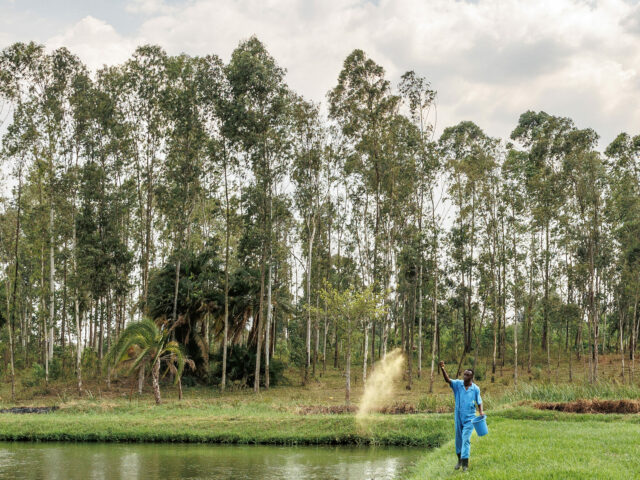Unlocking Africa’s Sustainable Future: The Promise of Mass Timber in Construction

By Neema Mosha
As the world looks towards Africa for its future growth, the continent’s role in global construction is set to become pivotal. With the population projected to reach 2 billion by 2050, half of whom will reside in urban areas, Africa is poised to become a major hub for global construction, accounting for 35% of all building activity by 2060. However, this rapid urbanization presents a critical challenge: the construction sector currently contributes 39% of global carbon emissions, and traditional building practices reliant on cement and steel risk exacerbating the global climate crisis.
But there is a transformative alternative—mass timber construction. This innovative approach not only has the potential to place Africa at the forefront of the global decarbonization agenda but also to drive significant economic and social benefits across the continent. Mass timber, an engineered wood product made from compressed wood panels, is 15 times stronger than steel, lighter, more flexible, and far more thermally efficient. Its use in construction can significantly reduce the reliance on carbon-intensive materials like cement and steel, with every cubic meter of mass timber used in place of concrete preventing 2 tonnes of CO2 from entering the atmosphere.
The potential impact is staggering. If just 20% of sub-Saharan Africa’s housing needs by 2050 were met through mass timber construction, the region could save over 100 million tonnes of CO2 annually. When combined with other green building practices, such as recycled steel and green hydrogen-produced cement, the environmental benefits could be even greater.
East Africa: A Rising Star in Sustainable Timber
East Africa is uniquely positioned to lead this sustainable transformation. The region boasts a productive and sustainably certified timber resource base, rapid growth cycles, and a competitive position in both local and global markets. With innovative firms across the value chain and supportive government policies, East Africa has the potential to be a central player in this global shift towards sustainable construction.
Here, system thinking and intentionality—key aspects of Sweden’s world-renowned forestry model—can serve as guiding principles. In Sweden, forestry is managed with a holistic approach, considering the long-term environmental, economic, and societal impacts of every decision. Similarly, Africa’s timber industry must adopt a systemic mindset, treating forests as dynamic ecosystems where balanced management ensures both economic output and environmental sustainability. This will require intentionality, planning not just for immediate profits but for future generations, ensuring the timber industry’s growth is sustainable and its environmental impact minimized.
The region’s timber resources are impressive, with key players managing extensive areas of planted forests. For instance, New Forests Asset Management (NFAM) and Green Resources (GR) manage approximately 30,000 hectares, while the New Forests Company (NFC) oversees about 40,000 hectares. The Uganda Timber Growers Association (UTGA) members collectively manage around 80,000 hectares. These sustainably managed forests, with growth cycles of just 10-15 years compared to Scandinavia’s 60-100 years, provide a solid foundation for the region’s burgeoning timber industry.
Pioneers in Timber Manufacturing
East Africa is home to several pioneering companies pushing the boundaries of timber manufacturing. Companies like Mass Timber Technologies of South Africa have been at the forefront, utilizing African resources for mass timber production and supplying both regional and global markets. CPS has been operating for nearly a decade in timber frame construction in Zanzibar, while Easy Housing is developing an affordable timber housing model in Uganda. Meanwhile, Wazo is testing Cross Laminated Timber (CLT) manufacturing in Tanzania’s central regions. These firms are paving the way for sustainable, innovative construction solutions across the continent.
To fully realize this potential, proper planning is critical. As seen in Sweden, detailed, long-term forest management plans spanning decades ensure sustainable forestry practices and mitigate risks. Africa can adopt this same level of foresight by developing comprehensive forest management and timber production strategies that prioritize sustainability alongside economic growth. This approach will be crucial in protecting forest ecosystems while meeting the rising demand for timber in construction.
Downstream Developers and Technical Services
The value chain extends beyond manufacturing, with downstream developers and technical service providers playing crucial roles. Companies like CPS, Unity Homes, and GoDown are leading the way in sustainable development, while professional services firms such as Arup, BuildX, Ardhi na Mbao, Planning Architects, and the Architectural Association of Kenya (AAK) provide the expertise needed to ensure the success of these projects. Their work highlights the importance of integrated approaches that ensure mass timber construction is not only feasible but also technically sound and environmentally sustainable.
Government Support, Lobbyists, and Collaboration Opportunities
Government support and policy play a pivotal role in unlocking the potential of sustainable timber industries, much like Sweden’s successful integration of lobbyists and government working in tandem. Swedish forestry has benefitted from strong governmental oversight and well-organized industry advocacy groups that push for responsible forestry practices. The same framework is essential for Africa. African governments need to enact enabling policies that encourage investment in sustainable timber production while balancing environmental concerns.
Lobbyists, industry groups, and other stakeholders must work together to ensure these policies are both economically viable and environmentally responsible. By fostering a culture of collaboration between the public and private sectors, African nations can create a timber industry that is not only economically competitive but also aligned with global sustainability goals.
As Soipan Tuya – Kenya’s former Cabinet Secretary Environment, Climate Change and Forestry – aptly stated, the time for action is now, and collaboration across sectors is key. We invite stakeholders from across the industry—whether growers, developers, investors, or technical experts—to join us in realizing this opportunity. Together, we can shape a sustainable future for Africa, much like Sweden’s forestry model, and set a global example in the fight against climate change.





